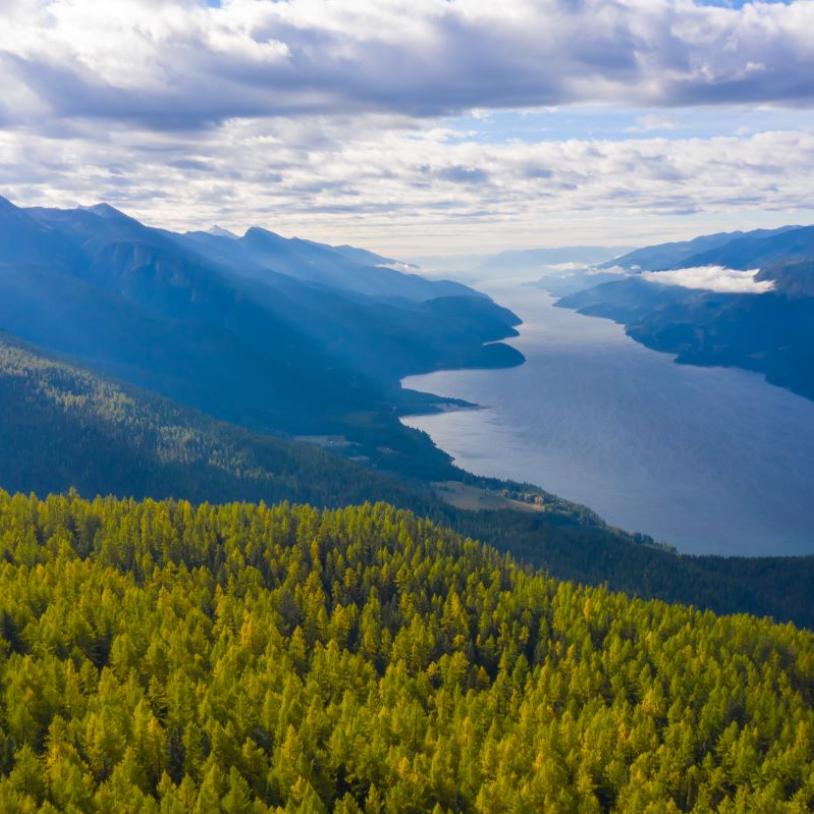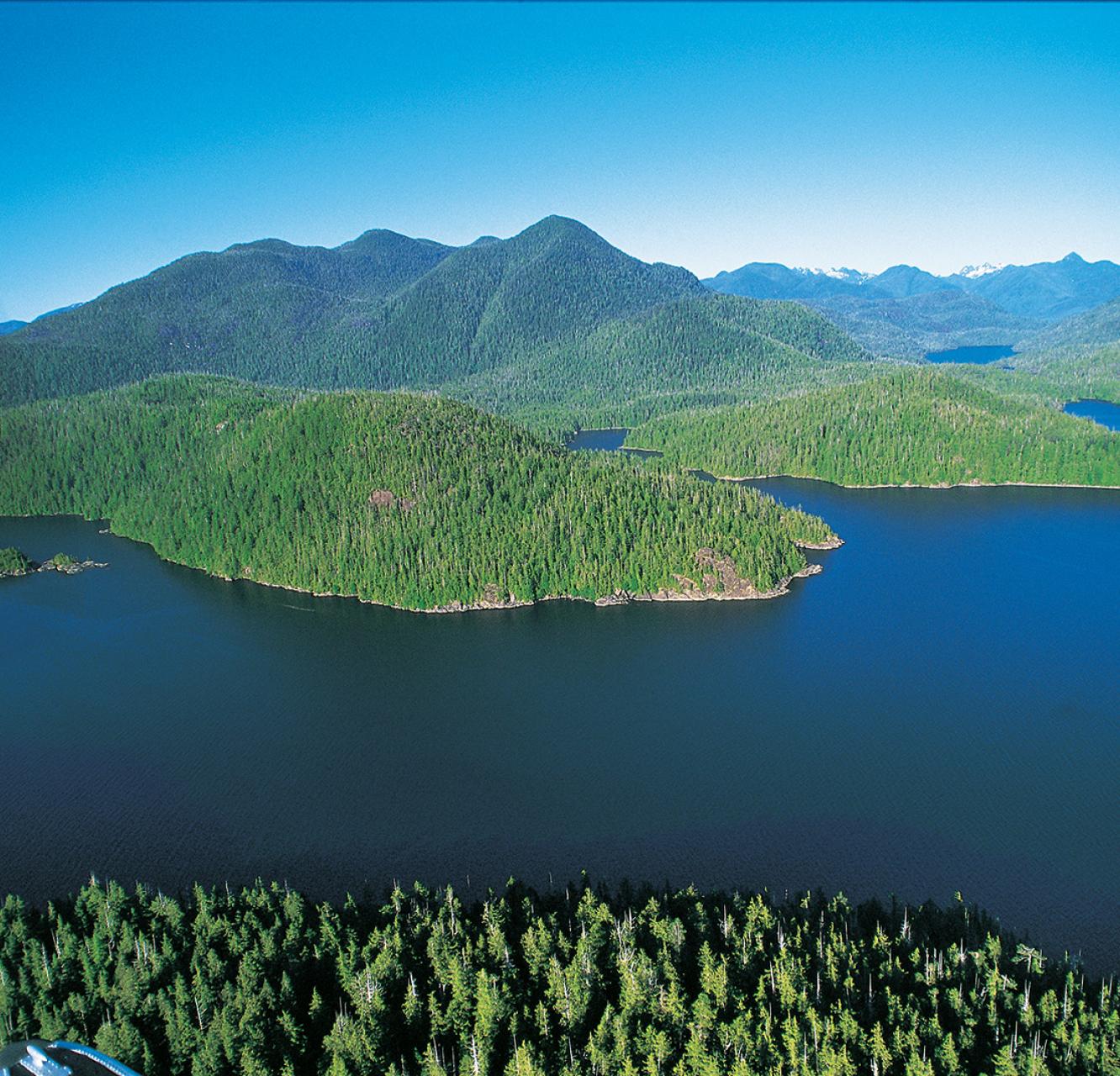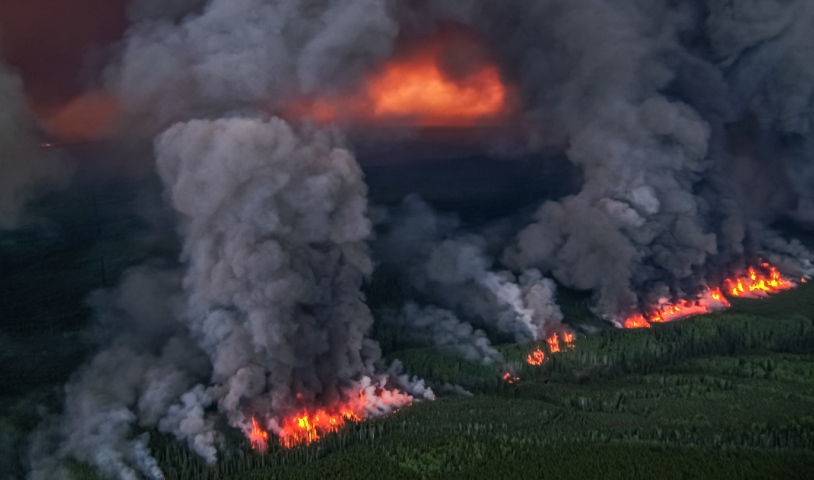Cameron River old growth worth preserving
Saturday, July 18, 2009As development and logging swarm around provincial parks, this tiny patch of trees on Vancouver Island cries out for aid
The last time I hiked into the gloomy canyon carved by the CameronRiver not far upstream from famed Cathedral Grove on Vancouver Island, the snow was knee-deep and it was colder than the proverbial toes in a well-digger's gumboots.
This time, it was balmy and clear. The only snow was above the tree line on MountArrowsmith, which made a dazzling white pinnacle against a painfully blue sky. There was just enough breeze to keep cruising mosquitoes and spiralling midges at bay.
I'd been invited to return to the canyon and then push on to the headwaters of CameronRiver -- it rises in Labour Day Lake -- by the Western Canada Wilderness Committee. National campaign director Joe Foy and Victoria campaign director Ken Wu wanted to see for themselves why logging plans in the watershed had caused such a fuss in Qualicum last year, with even the municipality weighing in. Outdoor adventure guide Gary Murdock had volunteered to lead the party and I thought I'd like to get another look at the controversial watershed, this time without frost on my eyelashes, so I sneaked away from my desk at first light and made it just in time to join the expedition.
As we threaded our way down a traverse of sheer canyon walls stained with sheets of an unusual red lichen -- a less difficult descent than it was in the snow but still hard on the knees -- and then moved into the old growth on the tiny flood plain, I listened to the trail conversation subside.
Talk always seems an inappropriate intrusion in a magical place like this. Below us, the river shot by, clear as green glass over coloured pebbles. It swirled around glistening roots and beneath undercuts, bubbling and frothing where it encountered ledges of conglomerate rock. Moss hung in velvety streamers from deadfalls and different species of ferns found lacy purchase in the nooks and crannies of the river bank.
It was cool, even gloomy in the canyon. The sunlight penetrated the dense canopy and the narrow aperture of the cliffs only in occasional brilliant shafts, sometimes glistening with dancing motes of vapour over riffles and chutes of white water. As we moved across a gravel bar and back up the bank toward a grove of huge red cedar and Douglas fir, I paused to admire one of the many drifts of delicate wild flowers.
In a single patch I was able to identify the creamy droop of goat's beard, the crimson splash of columbine, feathery Kelly green of new maidenhair ferns, the rich petals of salmonberry bloom, a froth of Indian celery and the pink, perfumed flutter of wild rose. Beyond them, a mossy glade opened.
The trees were huge, a match for anything found in world-famous Cathedral Grove, the catchy tourist nickname for the biggest stand of trees in MacMillanProvincialPark on the shores of CameronLake. At the foot of one, I found a rusted-out gold pan left by some long-departed prospector. Leaning on another, an ancient fly rod with a broken tip that somebody had left behind.
I watched a bit wistfully as Ken Wu, with all the agility of youth, clambered up the bank, dwindling into insignificance, his jacket a tiny blue thumbnail against the huge column of a Douglas fir that was likely a sapling when King John was signing the Magna Carta. I spread my arms against one trunk myself, an immense, shaggy cedar that would have taken several of us with arms extended to reach around.
All these trees had been flagged. Marked for future felling and removal by helicopter or simply a logging company keeping accurate inventory? Only time will deliver the right answer to that question.
Downstream we found an immense specimen of the extraordinarily slow-growing Pacific yew. Nobody had a tape measure, so I used my belt that, at least, I could appraise later. The tree proved two belt widths around, plus a couple of buckle lengths, plus a hand span.
Later, it worked out to a hair less than 2.7 metres in circumference, which by my admittedly rough calculations would make it the fourth or fifth largest specimen yet recorded in the province.
Even at the first guess as to size, the two veteran WCWC campaigners could barely contain their excitement.
"This canyon is a national treasure," Foy said. "We're concerned because all these old trees are flagged. Maybe it's just for inventory purposes, but there's very little old growth left on Vancouver Island and we would like to see this old growth preserved as park."
Mention new parks and some in the forest industry go ballistic. But the WCWC campaigners argue that recent satellite photos provide indisputable evidence that three-quarters of all the ancient forests on Vancouver Island have already been logged.
True, about six per cent of the Island's geography is protected in parks -- if you can call it protection when the province permits hydro development, mining and industrial road building within their boundaries -- but WCWC points out that 65 per cent of this land is naked rock, ice fields, alpine tundra, bogs, scrub or has already been logged. Of the remaining 35 per cent, less than one per cent is old growth coastal Douglas fir forest.
Overall, of big trees growing on the easily accessible valley bottoms and flood plains like the astonishing little grove hidden away in the CameronRiver canyon and in the basin of Labour Day Lake where the Cameron rises, 90 per cent is now thought to be gone. The stand we'd been looking at, like Cathedral Grove, represents only a tattered fragment of the immense Douglas fir forest that once covered the dry east coast of Vancouver Island.
How much of this particular ecosystem is left? According to the provincial government, a 1995 study estimated that only 0.5 per cent -- about 1,100 hectares -- of the Island's low coastal plain is still occupied by relatively untouched old growth forest. Put another way, 99.5 per cent has now been logged, carved up by roads or degraded by urban and industrial development.
Which raises a profound and troubling question we should all be demanding that our provincial government answer: Why are the last pathetic remnants of this forest type still a legitimate target for commercial exploitation? This is like arguing that some hunters should be permitted to shoot the last pair of buffalo because they can make a tiny profit selling the hides or that Noah would have been smarter to eat those last two giraffes because he'd already saved the peacocks.
Frankly, I think the WCWC campaigners are right when they call for an immediate moratorium on logging in the most endangered old growth forest types on Vancouver Island. Let's just take a breather before it's all gone, for Pete's sake. And let's all remember that there's never a justification for taking 100 per cent of anything -- and that principle applies to our private as well as our public stewardship.
If the forest industry has done the fine job it claims to have done in regenerating forests, let it log its second-growth rotation exclusively from now on. Meanwhile, let's have the province do the right thing and negotiate to extend MacMillanPark to include the CameronRiver watershed from the sea to Labour Day Lake and its surrounding drainage.
Photo: Joe Foy, Wilderness Committee - Ken Wu stands by oldgrowth Douglas fir tree in the Cathedral Canyon.





